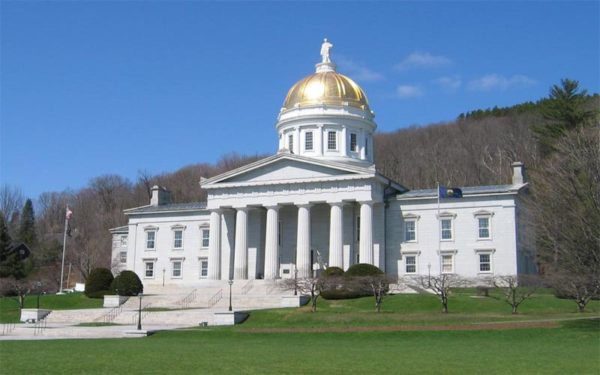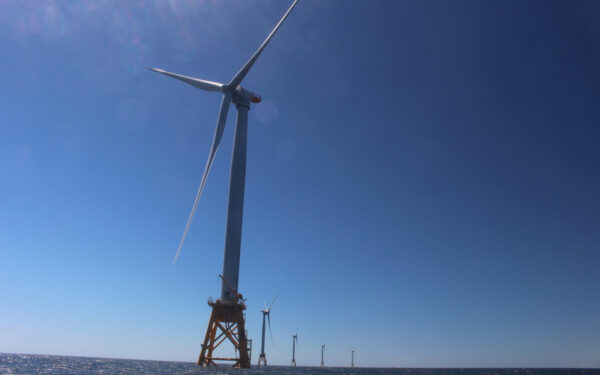
Maine's Climate Council released its Climate Action Plan in December. Now the work to implement it begins. Photo credit: EcoPhotography
As I write this, the news just broke that 2020 is tied for the hottest year on record (as if we didn’t have enough reasons to kick 2020 to the curb). It’s a record that’s been broken again and again since 2014. We don’t have any more time to waste to take aggressive action to curb carbon pollution and reach net-zero climate-damaging emissions by 2050.
But last month’s release of Maine’s Climate Action Plan gives us hope for the future. This plan results from a year-long effort, with the participation and input of thousands of people from around the state, including scientists, business owners, industry representatives, youth activists, and members of Maine’s tribes. The final plan is bold, comprehensive, and science based. If implemented well, it will generate jobs and spur economic growth while ensuring that our transition to a low-carbon economy benefits all Mainers.
Of course, the next steps are where things get challenging. Fleshing out the details of the Climate Action Plan is no small task. It will take work to make sure state leaders implement the plan’s policies aggressively enough to achieve the state’s climate objectives while advancing all Mainers economically. As the plan rightly states, “The release of this Climate Action Plan is not the end of the Council’s work, but the beginning.”
It’s just the beginning for us, too. CLF played a role in crafting the plan. And, even as we feel hopeful and energized about the work to come, we’ll keep up the pressure for swift, aggressive, and enforceable climate action as the plan moves forward.
The Plan Provides a Framework to Drive Innovative Policy and Market Growth
To achieve real progress in cutting carbon pollution, states must mandate science-driven emissions limits. So we’re pleased to see aggressive, modeling-backed goals for many of the strategies in the Climate Action Plan. These goals will ensure the state stays on track to reach at least a 45% reduction in climate-damaging emissions by 2030, as the law requires.
For example, one of the targets called for in the plan is putting 41,000 light-duty electric vehicles (the cars and small trucks you and I drive every day) on the road by 2025 and 219,000 by 2030. Gas guzzlers account for a whopping 59% of Maine’s transportation emissions. So, swapping them for electric models will drastically lower Maine’s climate pollution. For context, electric cars and trucks make up less than 0.5% of vehicles currently registered in the state.
This objective creates the framework needed to spur innovative strategies by policymakers, state agencies, and the business community. It also provides a way to measure success. For example, is the state on track to achieve the interim milestone for electric vehicles or not? This allows us to evaluate our progress and recalibrate if necessary. Equally important: having such bold goals in the climate action plan sends a signal to manufacturers (plus distributors, installers, and consumers like you and me) of what’s to come.
What Can – and Should – Implementation Look Like?
Though comprehensive, the Climate Action Plan lacks critical detail that still needs to be worked out. That’s where we find ourselves now – with a guiding framework in hand, but implementation specifics still in the air. If we’re going to achieve the state’s emissions reduction targets and reach the plan’s milestones, there’s no time to lose.
Responsibility for implementing the plan falls primarily to state legislators and agencies such as the Department of Environmental Protection. Other parts of the plan will require focused and prompt stakeholder engagement and planning (for example, developing an EV roadmap to achieve the aggressive goal to scale up the number of electric vehicles on our roads from virtually none to 41,000 in four years).
Over the coming months, Maine’s legislature will develop, debate, and ultimately vote on an array of new laws that will put the new plan into effect. Though it’s too early to evaluate all the bills that lawmakers will consider, many of the ones on the table have important climate implications. And CLF will be at the legislature (virtually) pushing for necessary changes to happen soon.
For other components of the plan, state entities – like the Department of Environmental Protection and Efficiency Maine Trust – don’t need to wait for action by the legislature or governor. They can get right to work creating new rules, standards, or task forces to carry out the plan. You’ll find CLF participating in these opportunities as they arise, commenting in rulemakings, and otherwise advocating for measures that ensure the state stays on track with cutting its climate pollution.
The Governor Also Plays a Key Role in Pushing Climate Action Forward
Governor Janet Mills recently gave us a window into her own climate plans. She announced a goal to more than double Maine’s clean energy and energy efficiency jobs by 2030, as well as initiatives to:
- Expand existing incentives for electric cars and trucks and build more charging stations across Maine, making electric options more accessible.
- Double the pace of home weatherization, a critical measure for reducing energy use and the emissions from our homes.
- Purchase more renewable energy to power Maine’s homes and businesses.
- Create energy efficiency incentive programs for commercial businesses, helping local companies lower their energy use.
The Governor also gave us a taste of her upcoming climate change legislative package. Among other things, it would turn Maine’s existing goal of becoming carbon neutral by 2045 into law, further advance cost-effective clean energy development, and launch a pilot program for community-level climate resiliency planning.
You Can Help Implement the Climate Action Plan
Whether the action is in the statehouse or at a state agency, members of the public have a role to play. We’ll let you know when these opportunities arise. It might mean contacting your representatives, submitting comment letters, or showing up (perhaps virtually) to voice support.
It’s always critical to remind decision-makers that we’re paying attention – and that we demand they take action on climate.
It’s time to tackle climate change in Maine. Join us!




